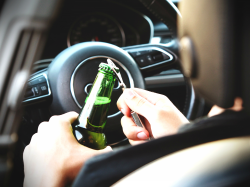
— Advanced driver assistance systems may cause drivers to engage in distracted driving, even when using basic systems such as lane-keeping assist and adaptive cruise control.
Researchers found drivers with experience who used driver assistance systems were nearly twice as likely to drive distracted compared to driving without the technology.
According to the AAA Foundation for Traffic Safety and the Virginia Tech Transportation Institute, the study looked at data from one group of drivers who owned vehicles equipped with advanced assist systems.
Those drivers had more experience using the systems, but a second group of drivers were provided vehicles equipped with driver assistance systems. Those drivers normally didn't have access to the systems, indicating they didn't have as much real-world experience using the technology.
During four weeks of testing, researchers found drivers who owned their vehicles were more familiar with the systems and more likely to drive distracted. Drivers in this group were also more likely to play with the radios or use their phones for texting when the driver assistance systems were activated.
But the drivers with less experience using the systems were more likely to pay attention to the job of driving.
A lack of trust and knowledge of the systems likely cause drivers to not rely so much on the technology. But drivers who are comfortable with the systems rely too much on the technology and put too much trust in the systems.
Researchers determined these drivers are more likely to focus their eyes and attention on all kinds of things other than driving. AAA and Virginia Tech say the increase in distracted driving behaviors occurs because of an overreliance on the technology, or what can also be called automation complacency.
Examples of this can be seen from multiple crashes involving semi-automated driving systems in Tesla vehicles. Even though Tesla's owner's manuals warn drivers to keep their focus and eyes on the roads and their hands on the steering wheels, the vehicles crash because drivers don't pay attention.
In December 2019, a Tesla driver allowed his vehicle to slam into a parked police car that had stopped to help a disabled vehicle. Although the investigation continues, the Tesla driver said the driver assistance technology known as Autopilot was engaged, so the driver felt comfortable enough to reach into the back seat to check on his dog.
Other Tesla incidents include a driver who was looking at her cell phone when the car crashed into a firetruck, and a crash of a Tesla SUV into a construction barrier after the vehicle traveled across the highway.
Another Tesla SUV crash killed the driver when the vehicle crashed into a concrete barrier that could have been avoided, and then there is the case of another driver who was traveling 80 mph when the vehicle slammed into a disable car. The driver said he believed technology from Tesla would allow him to look at his cell phone while driving.
In addition, a 40-year-old Tesla driver lost his life when his vehicle traveled under a truck trailer on a clear Florida day.




